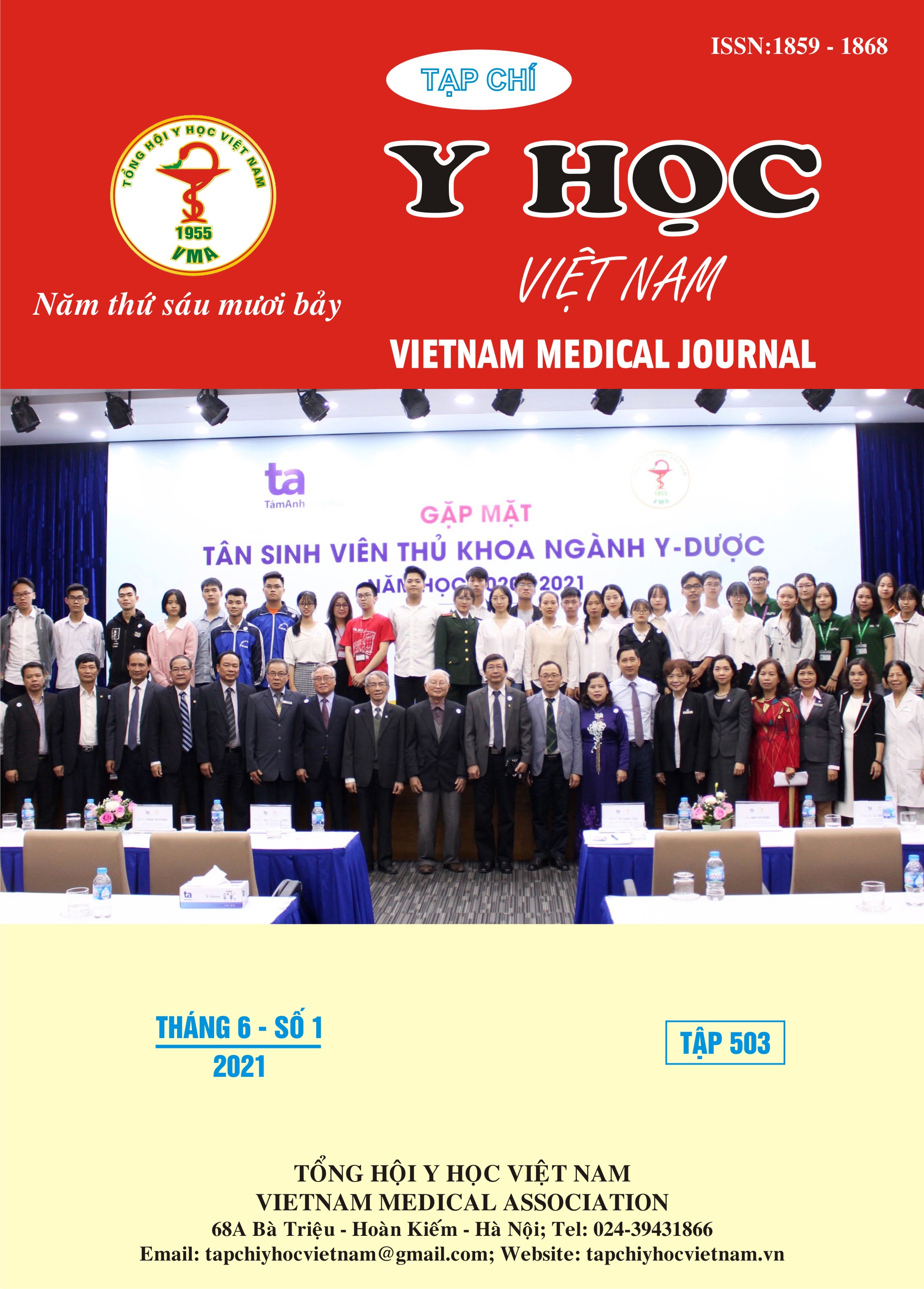RESULTS OF BEATING HEART MINI-INVASIVE VIDEO-ASSISTED SURGERY FOR ATRIAL SEPTAL DEFECT CLOSING AT VIET DUC UNIVERSITY HOSPITAL
Main Article Content
Abstract
Objective: To describe surgical technique and evaluate results of mini-invasive video – assisted surgery for atrial septal defect closing on beating heart at Viet Duc university hospital. Material and method: This is a retrospective, descriptive study of consecutive adult patients, who underwent mini-invasive video – assisted surgery for atrial septal defect closing on beating heart at Cardiovascular and Thoracic center, Viet Duc University Hospital from 08/2017 to 12/2020. There were thirty-four patients, including in this study. Twenty-six (76,5%) patients were woman. The average age was 41±13 years (range 17-64). Result: There was no hospital dead. Bypass time was 40±14 minutes (range18-82), total operating time 143±22 (range100–180) minutes. Ventilation time was 7,1±0,4 (range1-48) hours, time of hospital stay was 9±3(range 6-15) days. Residual shunt was presented in one (2,9%). Two (5,7%) underwent reoperation, caused by blood closed in right pleural cavity. Conclusion: The use of mini-invasive video – assisted surgery for ventricular septal defect closing on beating heart in adults at Viet Duc university hospital was effective, safe and gave good results.
Article Details
Keywords
Ventricular septal defect, Mini invasive cardiac surgery, beating heart
References
2. Nathan M. Do the benefits outweigh the risks? A review of the history of atrial septal defect repairs and device closures. :2.
3. Baumgartner H, De Backer J, Babu-Narayan SV, et al. 2020 ESC Guidelines for the management of adult congenital heart disease. Eur Heart J. 2021;42(6):563-645. doi:10.1093/ eurheartj/ehaa554
4. Ooi YK, Kelleman M, Ehrlich A, et al. Transcatheter Versus Surgical Closure of Atrial Septal Defects in Children. JACC Cardiovasc Interv. 2016;9(1):79-86. doi:10.1016/j.jcin.2015.09.028
5. Dang Q-H, Le N-T, Nguyen C-H, et al. Totally Endoscopic Cardiac Surgery for Atrial Septal Defect Repair on Beating Heart Without Robotic Assistance in 25 Patients. Innov Phila Pa. 2017;12(6):446-452. doi:10.1097/IMI.0000000000000436
6. Kodaira M, Kawamura A, Okamoto K, et al. Comparison of Clinical Outcomes After Transcatheter vs. Minimally Invasive Cardiac Surgery Closure for Atrial Septal Defect. Circ J. 2017;81(4):543-551. doi:10.1253/circj.CJ-16-0904
7. Mylonas KS, Ziogas IA, Evangeliou A, et al. Minimally Invasive Surgery vs Device Closure for Atrial Septal Defects: A Systematic Review and Meta-analysis. Pediatr Cardiol. 2020;41(5):853-861. doi:10.1007/s00246-020-02341-y
8. Ma Z-S, Dong M-F, Yin Q-Y, Feng Z-Y, Wang L-X. Totally thoracoscopic closure for atrial septal defect on perfused beating hearts. Eur J Cardiothorac Surg. 2012;41(6):1316-1319. doi:10.1093/ejcts/ezr193
9. Nassif M, van der Kley F, Abdelghani M, et al. Predictors of residual tricuspid regurgitation after percutaneous closure of atrial septal defect. Eur Heart J - Cardiovasc Imaging. 2019;20(2):225-232. doi:10.1093/ehjci/jey080


